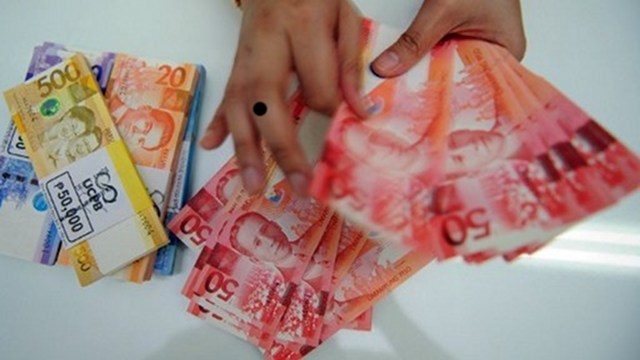SUMMARY
This is AI generated summarization, which may have errors. For context, always refer to the full article.

MANILA, Philippines – Although the Philippine peso is now the worst performing currency in Asia, the country’s economic team said it is no cause for alarm as fundamentals remain unchanged.
The peso shed 8 centavos to close at 48.25 to US$1 on Wednesday, September 28, from Tuesday’s 48.17 to US$1 – amid the negative sentiments of investors as well as external shocks caused primarily by the impending interest rate hike in the US. (READ: PH stocks continue to sink, peso slightly recovers)
The peso opened weaker at 48.19 to $1 and hit an intra-day low of 48.31 and an intra-day high of 48.1.
Volume of trade reached $441.2 million, which was lower than Tuesday’s $666.1 million.
Last Monday, the peso fell to its weakest level in 7 years amid the continued pull out of foreign funds from the local equities market as well as government bonds.
‘Fundamentals remain unchanged’
Diwa Guinigundo, deputy governor of the Bangko Sentral ng Pilipinas (BSP), said despite this development, fundamentals have not changed. (READ: Diokno contradicts Duterte: No US manipulation of PH peso)
“The stock market is dropping and the exchange rate is moving preceptiously down such as that we are now the worst performing currency in the region. But our fundamentals have not changed, our fundamentals have not moved one way or another,” he said during a forum titled Rising the Next Tiger: The New Administration’s Economic Priorities organized by Stratbase-Albert del Rosario Institute.
He explained the negative sentiment is being aggravated by some external shocks such as the timing of the next move by the US Federal Reserve, the decision of the United Kingdom to leave the EU, and the continued rebalancing of China.
The BSP official said the country’s gross domestic product (GDP) has posted 70 straight quarters of positive growth expanding by 7% in the second quarter of the year, from 6.8% in the first quarter of the year.
Likewise, he added the country’s inflation remained benign and stable averaging 1.5% in the first eight months of the year after easing to 1.8% in August from 1.9% in July.
‘Not a cause for alarm’
For his part, Budget Secretary Benjamin Diokno said the continued weakening of the peso against the greenback is not a cause for alarm as it is caused by external shocks due to the continued normalization of interest rates in the US. (READ: Peso depreciation ‘no cause for concern’ – Diokno)
The peso hit rock bottom at 55 to $1 during the height of the political crisis during the Estrada administration in 2000.
“Let us all be happy and let us not alarm ourselves,” he said.
According to him, the stronger US dollar benefits exporters as well as families of the 10 million Filipinos working abroad.
Furthermore, Guingundo pointed out the Philippines has enough buffers to survive the external headwinds.
He said the country’s gross international reserves (GIR) hit a record level of $85.9 billion in end August while the current account (CA) and balance of payments (BOP) have been posting surpluses for the past several years.
According to him, the foreign funds pulled out from the Philippine Stock Exchange (PSE) have not left the country.
He explained the interim peso deposits wherein the funds pulled out from the stock and government securities markets are brought in stood at P200 billion.
However, the continued pull out has resulted to the strengthening of the US dollar against the local currency.
The peso, for this month alone, has shed 3.9% after Malacanang declared a “state of lawless violence” due to an explosion killed 15 people in Davao City last Sept. 3 and after President Duterte blasted US President Barack Obama, UN secretary general Ban Ki-moon, and the European Union for meddling into the government’s all-out war against illegal drugs.
The BSP has set an inflation target of between 2% and 4% from 2016 to 2018. – Rappler.com
Add a comment
How does this make you feel?
There are no comments yet. Add your comment to start the conversation.